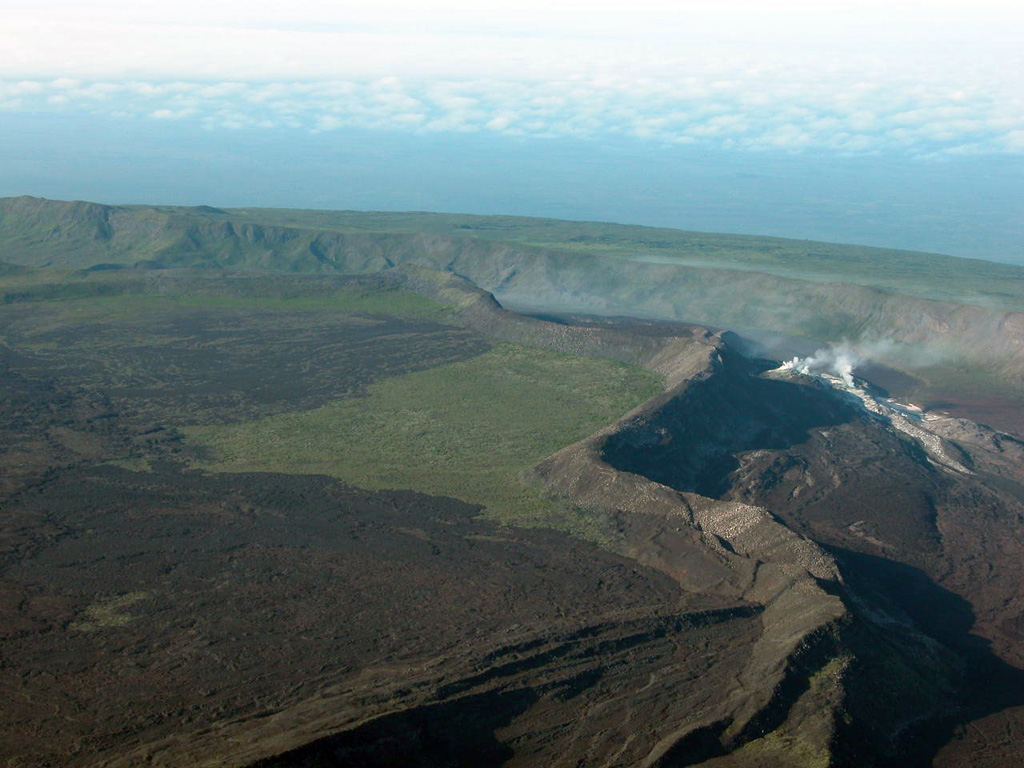Global Volcanism Program | Image GVP-11656

An aerial view of the SW caldera floor of Sierra Negra volcano shows El Azufre fumarolic field and the trap-door fault to the left. This sinuous 14-km-long, N-S-trending ridge occupies the west part of the caldera floor, which lies only about 100 m below its rim. El Azufre, the largest fumarolic area in the Galápagos Islands, lies within a graben between this ridge and the west caldera wall. The broad shield volcano of Sierra Negra at the southern end of Isabela Island contains a shallow 7 x 10.5 km caldera that is the largest in the Galápagos Islands.
Photo by Patricio Ramon, 2005 (Instituto Geofisca, Escuela Politecnica Nacional).
![]() This image is made available under the Creative Commons BY-NC 4.0 license terms.
This image is made available under the Creative Commons BY-NC 4.0 license terms.

Sierra Negra
